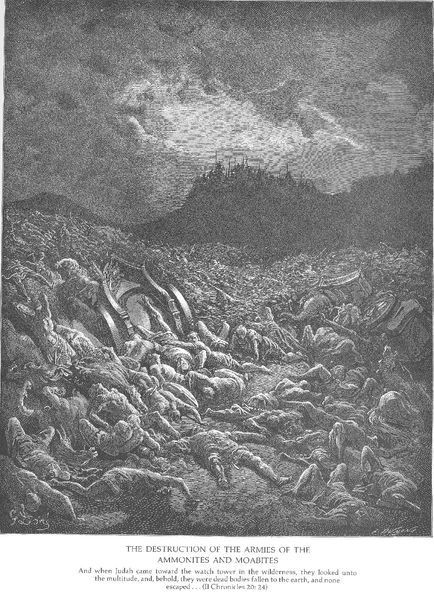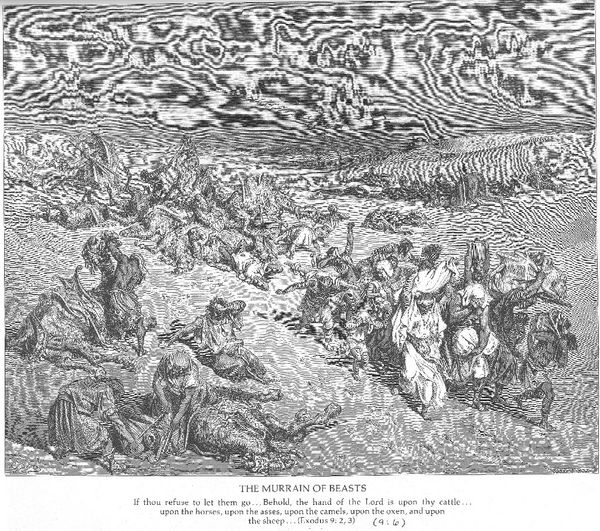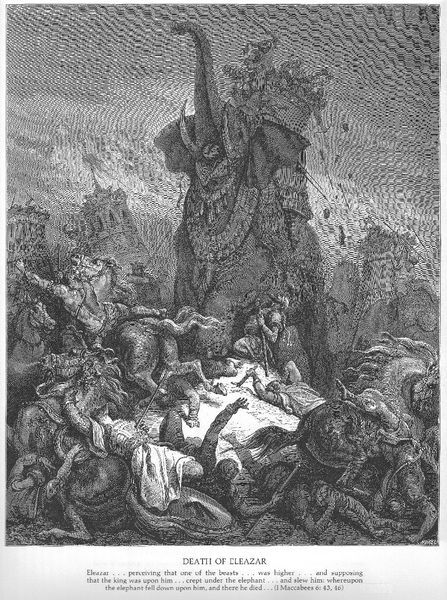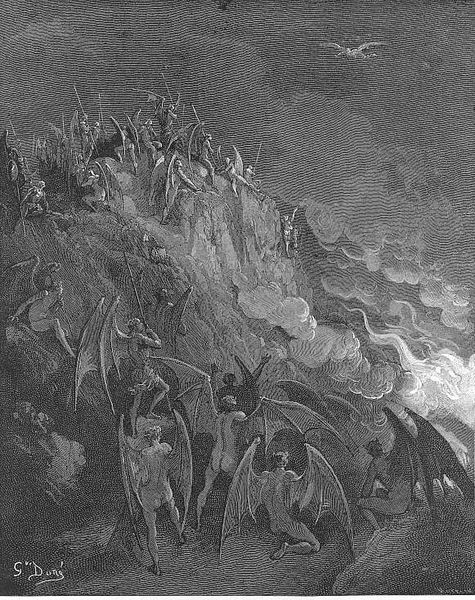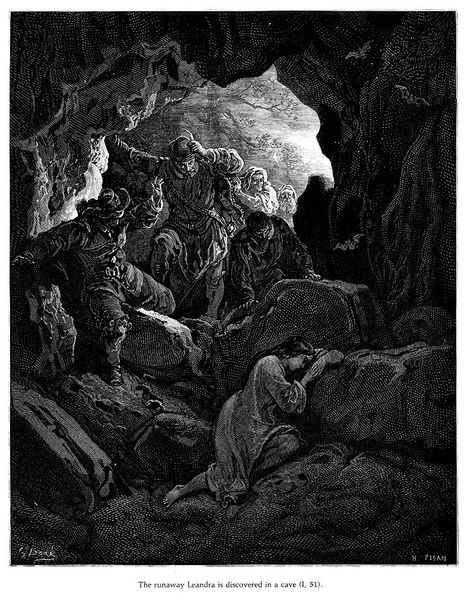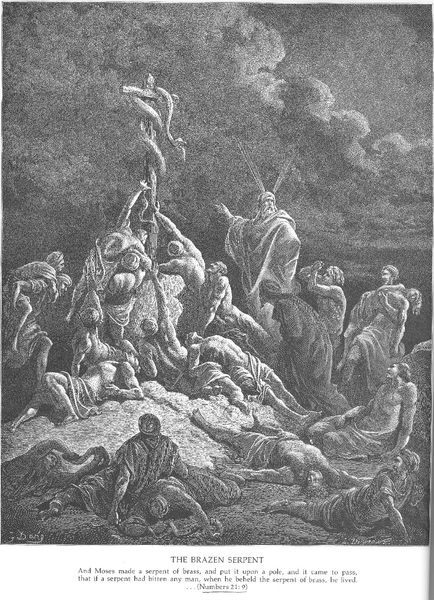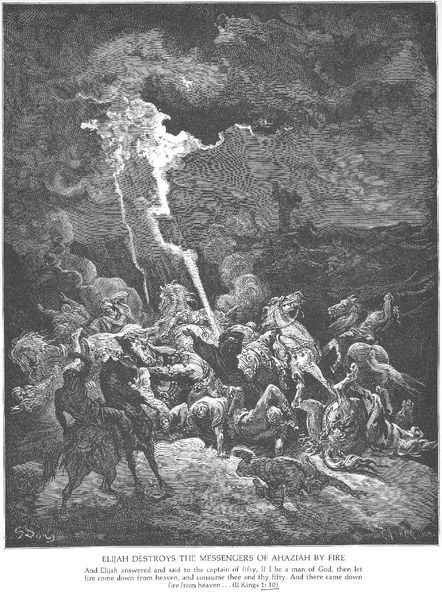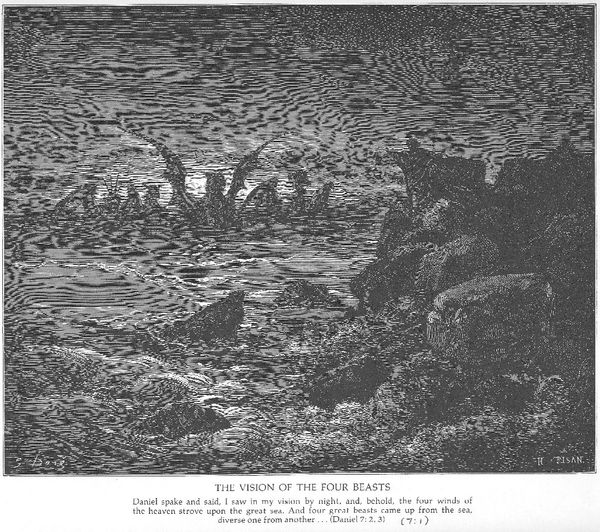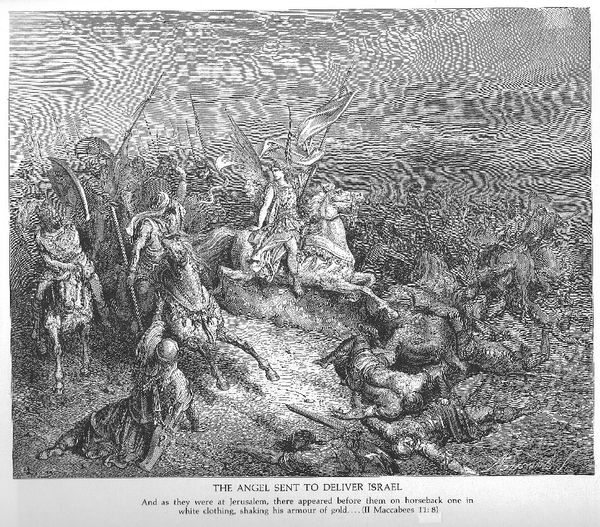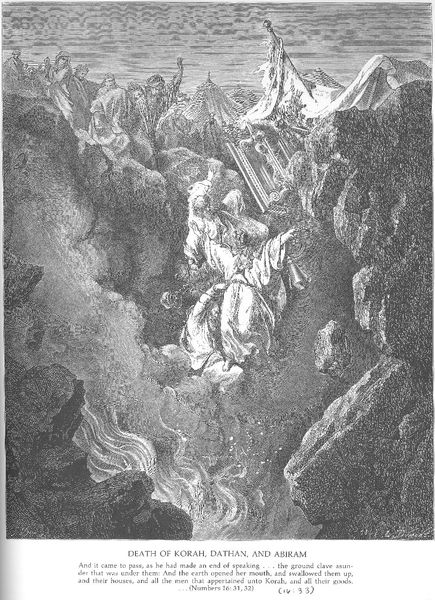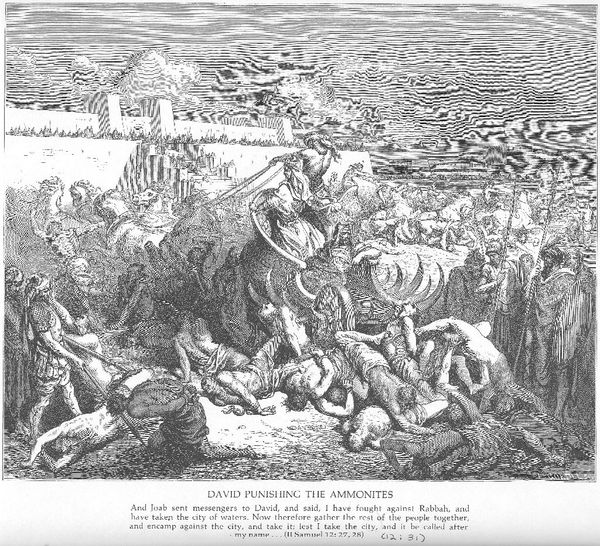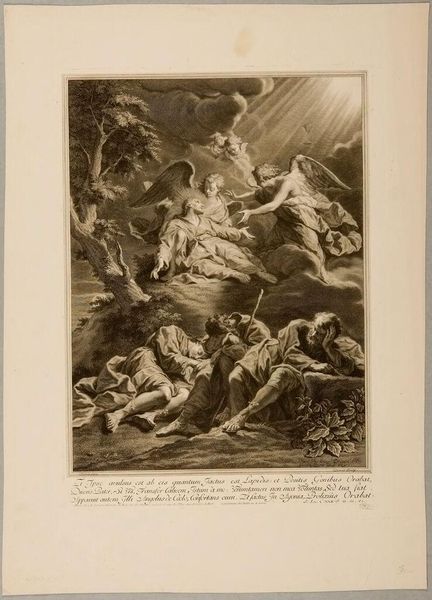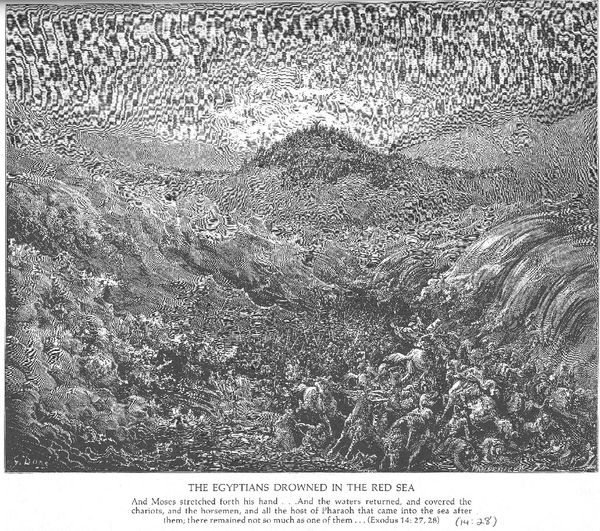
drawing, print, engraving
#
night
#
drawing
#
narrative-art
# print
#
war
#
figuration
#
text
#
romanticism
#
christianity
#
history-painting
#
engraving
#
christ
Copyright: Public domain
Editor: So, this is Gustave Doré's "The Midianites Are Routed," an engraving. The chaos feels palpable; a real sense of pandemonium in this flight. What’s your interpretation of this piece? Curator: I see Doré grappling with the visualization of power, specifically the power structures embedded within religious narratives and their representation through conflict. Look at the use of light and shadow. Is this divine illumination, or the blinding terror of war amplified to mythic proportions, effectively manipulating perception and dictating a single "truth"? Editor: I hadn’t considered that tension between the divine and the horrific. The figures are almost swallowed by the darkness. Curator: Exactly. Doré uses the drama of Romanticism to explore power dynamics inherent in such narratives. Who gets to write history? Whose perspective dominates? Consider how this scene, illustrating a victory ordained by faith, might be used to justify other, less righteous conflicts. Is it glorifying violence? Editor: I guess the scale feels overwhelming and even troubling once you think about the socio-political ramifications of its narrative. The text at the bottom roots this as religious history. Curator: And whose interpretation of religious history becomes culturally dominant? Doré isn’t merely illustrating a biblical event; he's participating in a much larger cultural conversation about belief, power, and their visual representation. His choices reinforce specific power structures. Editor: I hadn't looked at it that way, but now I’m definitely seeing how the artistic choices become a powerful form of rhetoric themselves. Curator: Indeed. Reflecting on this work helps us examine how narratives, especially those linked to faith and nationhood, can be constructed and wielded, then and now.
Comments
No comments
Be the first to comment and join the conversation on the ultimate creative platform.
